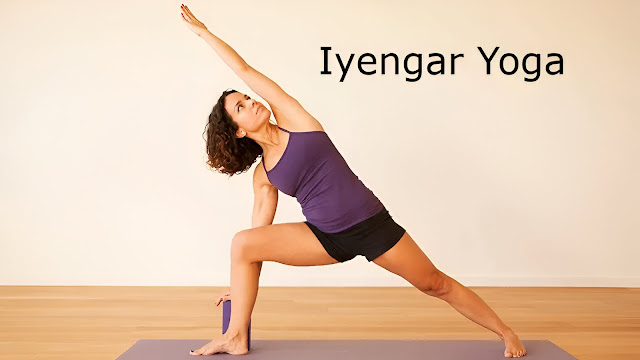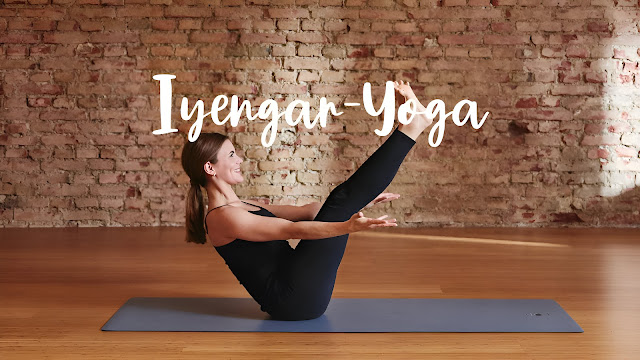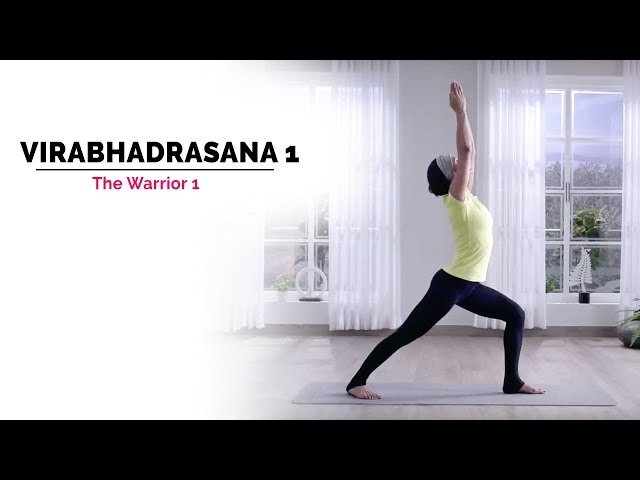How to do Iyengar Yoga: Beginners Guide
Namaste 🙏
Our previous post describes the essential yoga types, "Hatha Yoga", "Ashtanga Yoga", "Kundalini Yoga" and "Aerial Yoga". Now from this post, we are continuing our journey to learn about the next essential yoga pose called, "Iyengar Yoga". So without wasting the time, let's roll...✌
Iyengar Yoga for beginners opens a gateway to a world of mindful movement and holistic well-being. If you're new to the mat, this yoga style founded by the legendary B.K.S. Iyengar is a perfect starting point. Iyengar Yoga for beginners is not just about mastering poses; it's a journey of self-discovery, where each asana is an exploration of body and mind. What sets Iyengar Yoga for beginners apart is its emphasis on precision and alignment, making it accessible to all ages and fitness levels. Through prop-assisted poses, you not only build flexibility and strength but also develop a profound understanding of your own body. So, if you're ready to embark on a transformative journey, Iyengar Yoga for beginners welcomes you to a practice that goes beyond physical postures – it's a mindful path to wellness and balance.
 |
| Iyengar Yoga |
Introduction
Welcome to the world of Iyengar Yoga, a path that offers not just physical agility but a journey towards mental clarity and inner peace. Whether you are a yoga enthusiast or a curious beginner, this blog is your comprehensive guide to understanding the basics of Iyengar Yoga, its unique characteristics, and how it can transform your wellness journey.
Iyengar Yoga: A Symphony of Precision and Alignment
At its heart, Iyengar Yoga is more than just a series of poses; it's a discipline that harmonizes the body and mind through focused precision and alignment. This form of yoga, named after its founder B.K.S. Iyengar, stands out in its meticulous approach to posture and breath control. B.K.S. Iyengar, a yoga legend, introduced this style to bring a deeper, more anatomical focus to the practice, making it accessible and beneficial for everyone, irrespective of their age or physical condition.
The Origin: A Legacy of Wellness
Tracing its roots back to the early 20th century, Iyengar Yoga is a testament to the profound understanding of how the human body functions. B.K.S. Iyengar's own journey, marked by health challenges and a relentless pursuit of knowledge, laid the foundation for a yoga practice that emphasizes precision. This attention to detail and alignment in each posture ensures that practitioners not only perform each asana (pose) safely but also receive the maximum benefit from their practice.
Why Beginners Should Care
For beginners, diving into the world of yoga can often be overwhelming. Iyengar Yoga, with its structured approach and the use of props like blocks, belts, and bolsters, makes this journey less daunting. These tools aid in achieving the correct alignment, reducing the risk of injury, and making the postures accessible to people at all levels of fitness and flexibility.
As you step into this enlightening world of Iyengar Yoga, this blog aims to be your companion and guide. We will walk you through the essential poses tailored for beginners, share the profound benefits for both your body and mind, and offer practical tips to start and maintain your practice. Whether you're looking to enhance your physical health, seeking mental clarity, or simply curious about this time-honored discipline, our journey together will equip you with everything you need to know to begin your Iyengar Yoga practice. So, roll out your mat, take a deep breath, and prepare to embark on a transformational journey with Iyengar Yoga.
Understanding Iyengar Yoga
History and Philosophy
The Legacy of B.K.S. Iyengar
The story of Iyengar Yoga begins with its founder, Bellur Krishnamachar Sundararaja (B.K.S.) Iyengar, born in 1918 in India. B.K.S. Iyengar's journey into yoga started in his teenage years, a path he embarked upon to improve his own health which was compromised since childhood. Through years of dedicated practice and teaching, Iyengar not only transformed his health but also refined the way yoga was practiced and taught worldwide.
His method, now known as Iyengar Yoga, was popularized in the west in the 1970s, leading to a global yoga revolution. B.K.S. Iyengar authored several seminal books on yoga practice and philosophy, including "Light on Yoga," which is often considered the bible of modern yoga.
Core Principles of Iyengar Yoga
Iyengar Yoga is built on the pillars of alignment, sequencing, and timing:
- Alignment: This refers to the precise way in which the body should be positioned in each yoga pose to achieve maximum benefit and prevent injury.
- Sequencing: The order in which asanas are practiced is crucial in Iyengar Yoga, as it contributes to the effectiveness of the practice in a holistic way.
- Timing: Holding poses for a certain duration and the attention to the rhythm of the breath is a key aspect of this style.
How Iyengar Yoga Differs from Other Yoga Styles
While there are many paths in the vast world of yoga, each style has its unique flavor:
- Vinyasa Yoga is characterized by its fluid transitions and a focus on the flow of movement linked with breath.
- Hatha Yoga, often a slower-paced practice, emphasizes basic poses with attention to breathing and meditation.
- In contrast, Iyengar Yoga is less about the flow and more about the depth and precision in each posture.
Focus on Alignment and Use of Props
The hallmark of Iyengar Yoga is its emphasis on alignment. B.K.S. Iyengar introduced the innovative use of props like yoga blocks, belts, and chairs, making yoga accessible to people of all ages and abilities. These props are not just aids for beginners; they are tools to help every practitioner gain a deeper understanding of each pose, regardless of their experience level.
Props in Iyengar Yoga are used to:
- Ensure proper alignment and depth in a pose.
- Modify poses to accommodate individual needs.
- Enhance the understanding of the asanas.
- Prevent injuries and aid in the healing process.
Iyengar Yoga offers a meticulous approach to yoga, where the focus is on the alignment and minute details of each pose. Unlike Vinyasa's fluidity or Hatha's meditative approach, Iyengar's method is a disciplined and introspective practice. It offers practitioners, especially beginners, a way to develop strength, flexibility, and an enhanced understanding of their bodies and minds.
Benefits of Iyengar Yoga for Beginners
Embarking on your Iyengar Yoga journey can be transformative, offering a myriad of benefits that extend well beyond the yoga mat. For beginners especially, this practice can be a gateway to enhanced well-being, both physically and mentally.
Physical Benefits
- Iyengar Yoga gently eases your body into a state of improved flexibility. The poses, even the basic ones, stretch and tone your muscles, leading to enhanced muscular flexibility over time.
- Strength isn't just about muscle power; it's about endurance and stability. Through holding poses for longer durations and focusing on precise alignment, Iyengar Yoga builds core strength, vital for overall physical health.
Better Posture and Alignment:
- Our modern lifestyle, often sedentary, leads to poor posture habits. Iyengar Yoga emphasizes spinal alignment, which is crucial for a good posture.
- Regular practice aligns your body correctly, reducing strain on your muscles and joints. This improvement in posture is not just for the time you spend on the yoga mat but extends into your daily life.
Mental Benefits
Stress Reduction and Improved Mental Clarity:
- The meditative aspects of Iyengar Yoga, such as focused breathing and mindfulness, help calm the mind. This reduction in stress is not only a subjective feeling but is supported by physiological changes like lower cortisol levels.
- As you progress, you'll notice enhanced mental clarity and concentration. The practice encourages a state of present awareness, which helps in clearing mental clutter.
Connection with Inner Self:
- Yoga is more than physical exercise; it's a journey inward. Iyengar Yoga, with its introspective nature, fosters a deeper connection with your inner self.
- Through consistent practice, you become more attuned to your body's needs and emotions, leading to a harmonious balance between mind, body, and spirit.
Who Can Benefit?
Suitability for All Ages and Fitness Levels:
- One of the most inclusive forms of exercise, Iyengar Yoga is suitable for everyone, regardless of age or fitness level. The use of props makes it accessible even for those who may be less flexible or have physical limitations.
- Whether you are a young adult, middle-aged, or in your senior years, you can start and benefit from Iyengar Yoga.
Special Considerations (like Injury Recovery):
- If you’re recovering from an injury or dealing with a chronic condition, Iyengar Yoga can be particularly beneficial. Its emphasis on alignment and the use of props can aid in recovery and pain management.
- However, it's always recommended to consult with a healthcare provider before starting any new exercise regimen, especially if you have specific health concerns.
Whether you seek physical strength and flexibility, mental clarity, or a deeper connection with yourself, Iyengar Yoga offers a comprehensive path. Its adaptability makes it a welcoming practice for beginners of all backgrounds and conditions, promising a journey towards a healthier, more balanced life.
 |
| Iyengar-Yoga |
Scientific Studies about Iyengar yoga
Iyengar yoga is a form of yoga that emphasizes alignment, precision, and detail in the performance of poses and breath control. According to scientific research, some of the benefits of Iyengar yoga are:
- It reduces stress and anxiety by triggering the relaxation response in the body, which lowers the heart rate and blood pressure 🔗 🔗.
- It helps manage depression by improving mood and reducing cortisol levels, a hormone associated with stress and inflammation 🔗.
- It decreases lower back pain by strengthening the muscles and improving the posture and flexibility of the spine 🔗.
- It improves the quality of life in people with chronic conditions or acute illnesses by enhancing physical and mental well-being, self-efficacy, and coping skills 🔗.
- It stimulates brain function by increasing blood flow and oxygen to the brain, which may improve memory, attention, and cognitive performance 🔗.
Essential Iyengar Yoga Poses for Beginners
As a beginner in Iyengar Yoga, familiarizing yourself with some fundamental poses is key. These poses are the building blocks of your practice, helping you to develop a strong foundation. Let's dive into a few essential Iyengar Yoga poses, along with step-by-step instructions and their benefits.
Standing Poses
Tadasana (Mountain Pose)
- How to Do It: Stand with your feet together, arms by your side. Ground your feet firmly, engage your thighs, and lift your chest. Keep your shoulders relaxed and your head straight. Breathe steadily.
- Benefits: Tadasana improves posture, strengthens thighs, knees, and ankles, and helps in developing overall body awareness.
Uttanasana (Standing Forward Bend)
- How to Do It: From Tadasana, exhale and hinge at your hips to bend forward. Try to touch your palms or fingertips to the floor beside your feet. Keep your knees straight but not locked.
- Benefits: Uttanasana stretches the hamstrings and calves and can help relieve tension in the spine.
Seated Poses
Dandasana (Staff Pose)
- How to Do It: Sit on the floor with your legs extended in front. Press your palms into the floor beside your hips, and keep your back straight. Activate your leg muscles and flex your feet.
- Benefits: This pose strengthens the back muscles and improves posture.
Paschimottanasana (Seated Forward Bend)
- How to Do It: From Dandasana, inhale and lift your arms above your head. Exhale, and bend forward from your hips, extending your arms toward your feet. Hold your feet or ankles.
- Benefits: It stretches the spine, shoulders, and hamstrings, and can help calm the mind and relieve stress.
Restorative Poses
Balasana (Child’s Pose)
- How to Do It: Kneel on the floor, touch your big toes together, and sit on your heels. Separate your knees about hip-width apart and lay your torso down between your thighs. Extend your arms forward.
- Benefits: Balasana is a resting pose that helps calm the brain and relieve stress and fatigue.
Savasana (Corpse Pose)
- How to Do It: Lie flat on your back with your legs slightly apart and arms relaxed at your sides. Close your eyes and breathe deeply, focusing on relaxing every part of your body.
- Benefits: Savasana relaxes the whole body, reduces stress, and improves mental health.
Detailed Instructions and Benefits
- In Iyengar Yoga, the focus on alignment and the correct execution of poses is crucial. As beginners, it's essential to:
- Understand the alignment points of each pose.
- Use props like blocks, belts, or blankets to aid your practice and ensure correct alignment. For example, in Uttanasana, if you can't reach the floor, use a block.
- Listen to your body and avoid pushing too hard. Iyengar Yoga encourages a gradual and consistent practice.
These basic poses serve as an excellent introduction to the world of Iyengar Yoga. By practicing them regularly, you'll start to notice improvements in your flexibility, strength, and mental clarity. Remember, the journey of yoga is personal and unique to each individual, so embrace your path with patience and curiosity.
Tips for Progress and Mindfulness in Iyengar Yoga
Embarking on the Iyengar Yoga journey is an enriching experience that goes beyond physical postures. It's about cultivating mindfulness and consistency, which are key to making progress. Here are some valuable tips to help you deepen your practice and embrace the full spectrum of Iyengar Yoga.
Maintaining Consistency
Setting a Regular Practice Schedule:
- Consistency is crucial in any yoga practice, especially in Iyengar Yoga, where precision and technique are important.
- Find a time of day that works best for you and commit to practicing at that same time. Whether it’s a morning routine to invigorate your day or an evening session for relaxation, consistency will make your practice a natural part of your daily life.
Keeping a Yoga Journal:
- Start a yoga journal to track your practice. Note down the poses you practice, your feelings during the session, and any insights or challenges you encounter.
- Reflecting on your journal can be incredibly insightful. It helps in recognizing your progress, understanding patterns in your practice, and setting goals.
Incorporating Mindfulness
Breathing Techniques:
- In Iyengar Yoga, breath control or pranayama is as important as the poses themselves. Learning to breathe correctly enhances the effectiveness of your practice.
- Practice deep, mindful breathing even when you are not doing the poses. Pay attention to the rhythm of your breath; this awareness can transform your practice.
Mindful Meditation During Practice:
- Integrating meditation into your yoga practice can deepen the connection between your mind and body.
- During your practice, take moments to be still, close your eyes, and focus inward. Observe your thoughts, sensations, and emotions without judgment.
- After completing your poses, spend a few minutes in Savasana (Corpse Pose), allowing your mind to process and absorb the effects of the practice.
The journey of Iyengar Yoga is personal and evolves over time. By maintaining a regular practice schedule and embracing mindfulness through breathing and meditation, you'll not only enhance your physical abilities but also cultivate a deeper sense of inner peace and clarity. Be patient with yourself, and enjoy every step of your yoga journey!
 |
| Iyengar Yoga for Beginners |
Conclusion
In the world of yoga, Iyengar Yoga stands as a beacon of precision, alignment, and holistic well-being. For beginners, understanding the essence of Iyengar Yoga is not just a step into a new form of exercise; it's an exploration of self-discovery, physical strength, and mental clarity. Let's recap why delving into Iyengar Yoga is a profound and rewarding journey for those taking their first steps on the mat.
Recap of the Importance of Understanding Iyengar Yoga for Beginners:
- Precision in Practice: Iyengar Yoga places a strong emphasis on precise alignment in each pose. This attention to detail ensures not just physical safety but also maximizes the benefits of the practice.
- Accessible to All: With the use of props and a focus on gradual progression, Iyengar Yoga is inclusive and suitable for individuals of all ages and fitness levels. Whether you're a seasoned yogi or a complete novice, Iyengar Yoga meets you where you are on your journey.
- Mental Clarity: Beyond the physical postures, Iyengar Yoga is a pathway to mental clarity. The mindful approach, breathing techniques, and meditative aspects contribute to stress reduction, improved focus, and a deeper connection with your inner self.
Start the Journey and Explore Its Benefits:
Embarking on a new yoga journey, especially with a style as rich as Iyengar, can be a transformative experience. We encourage you to:
- Take the First Step: Regardless of your fitness level or previous yoga experience, the first step is the most important. Roll out your mat, embrace the learning process, and enjoy the journey.
- Embrace Progress, Not Perfection: Iyengar Yoga is about progress, not perfection. Each practice session is an opportunity to grow, learn, and understand your body and mind a little better.
- Celebrate Small Victories: Whether it's holding a pose a bit longer or achieving a deeper stretch, celebrate your progress. Every step forward, no matter how small, is a triumph.




No comments:
Post a Comment